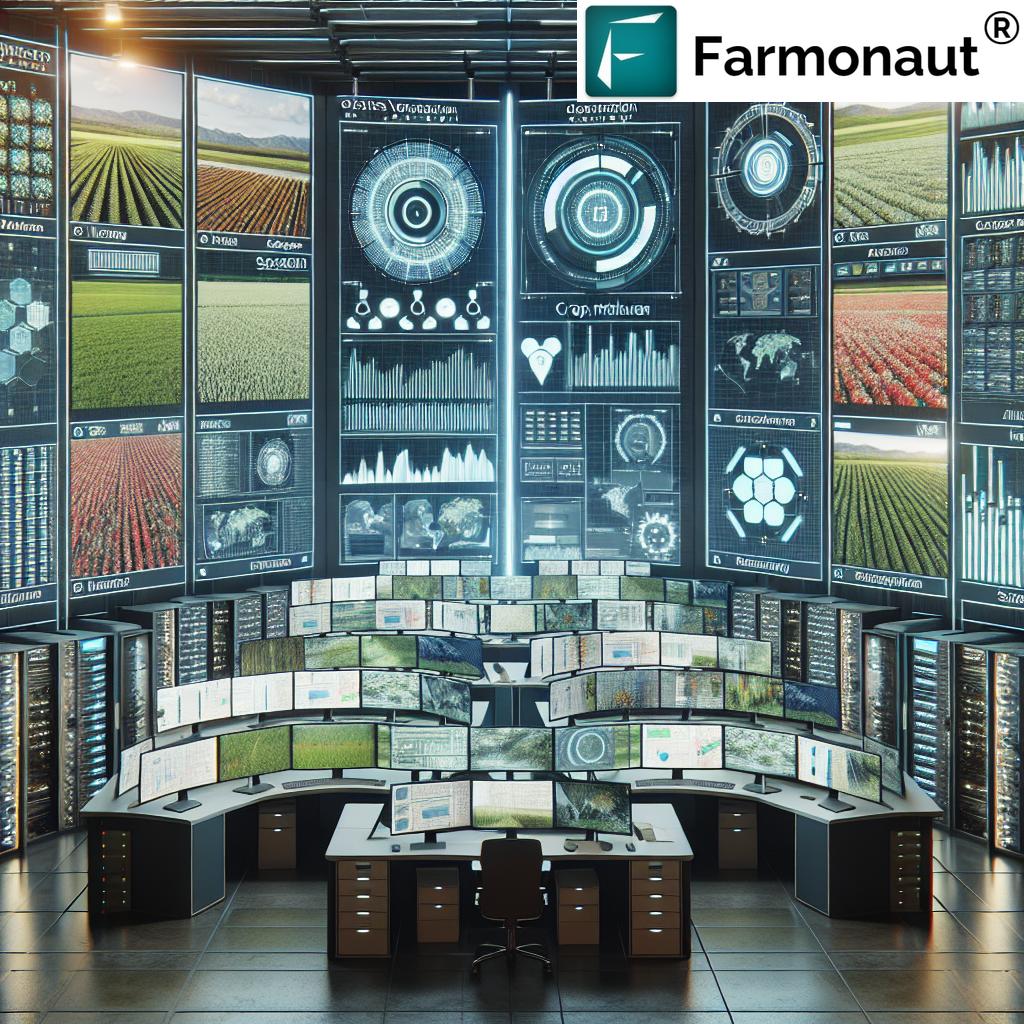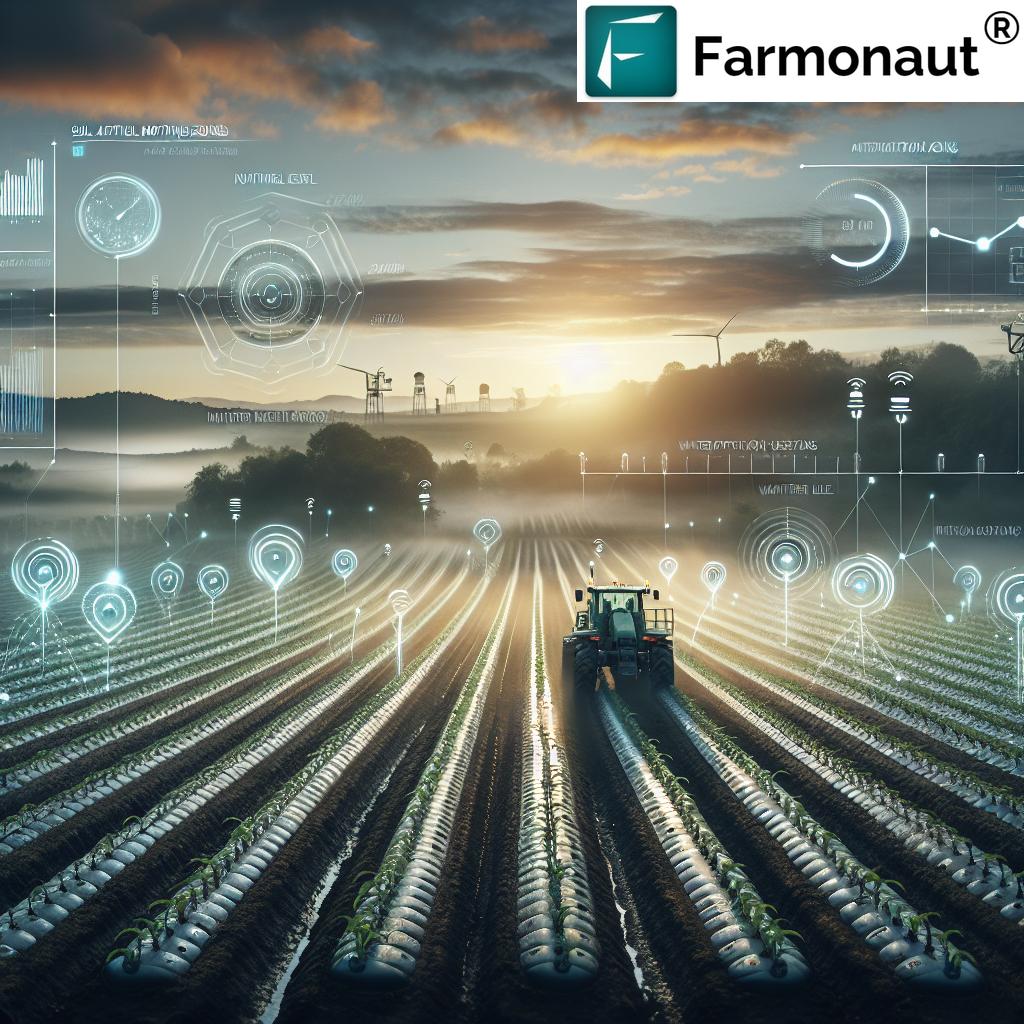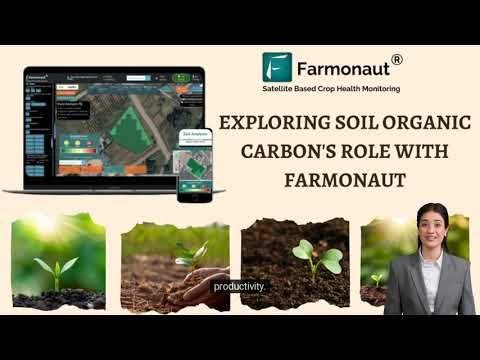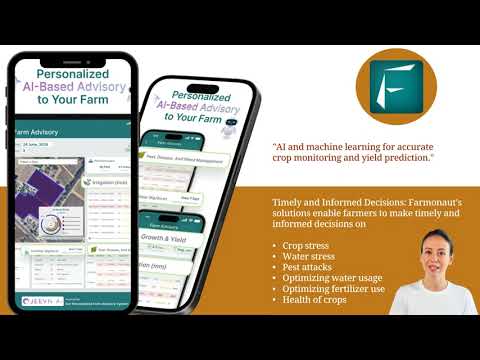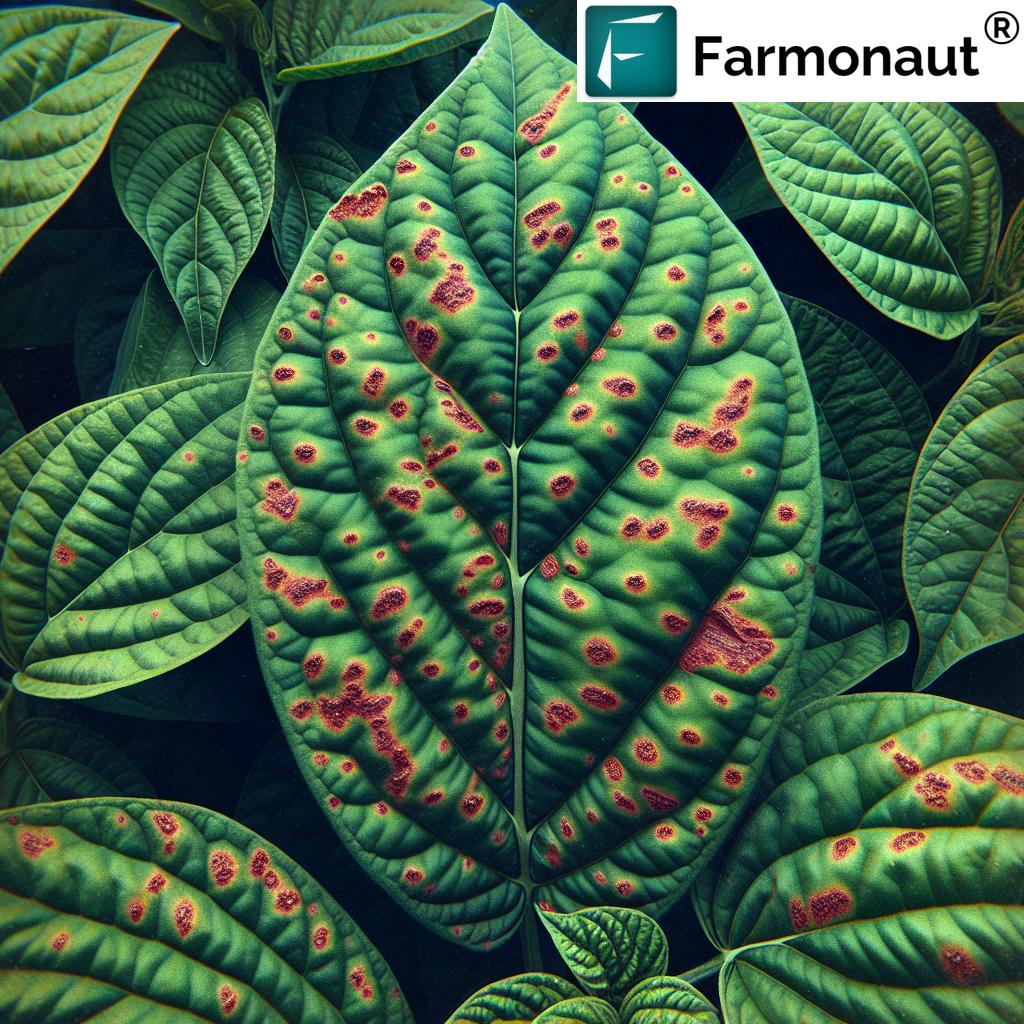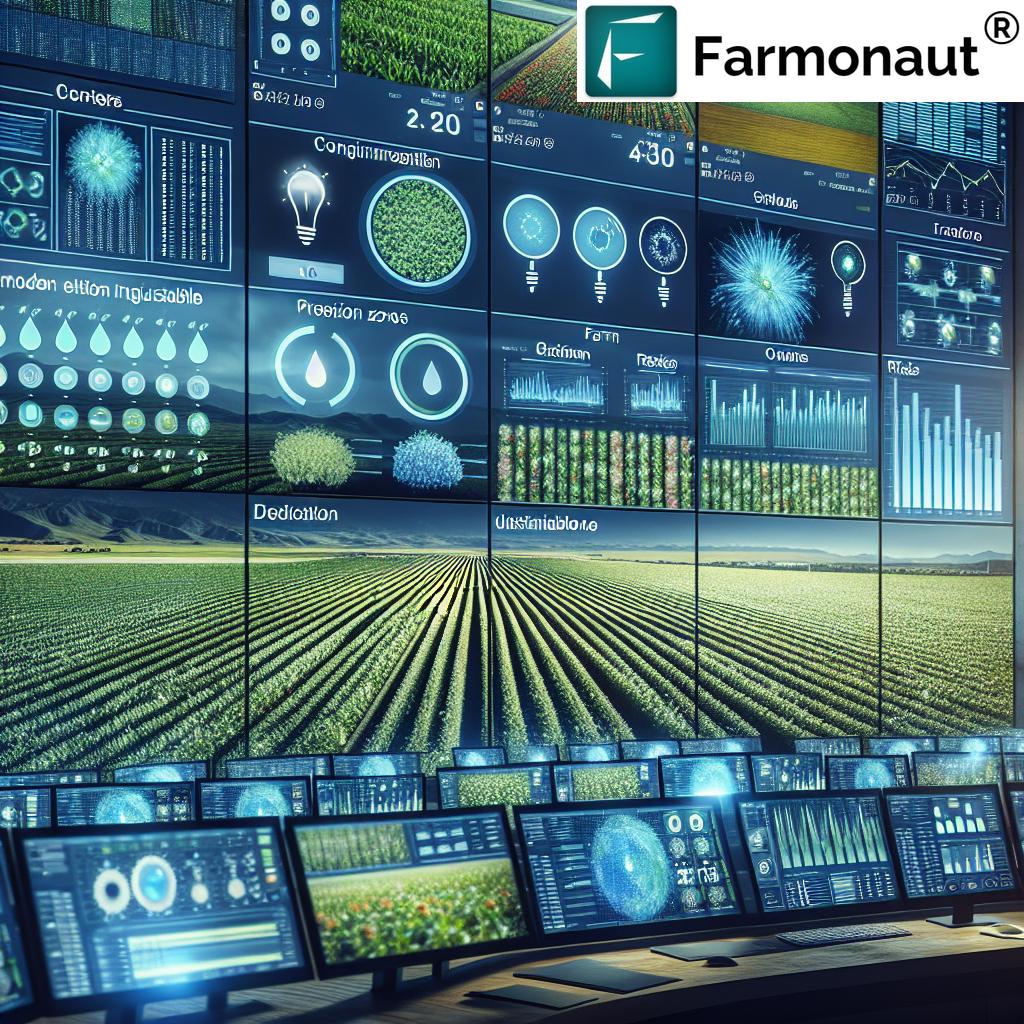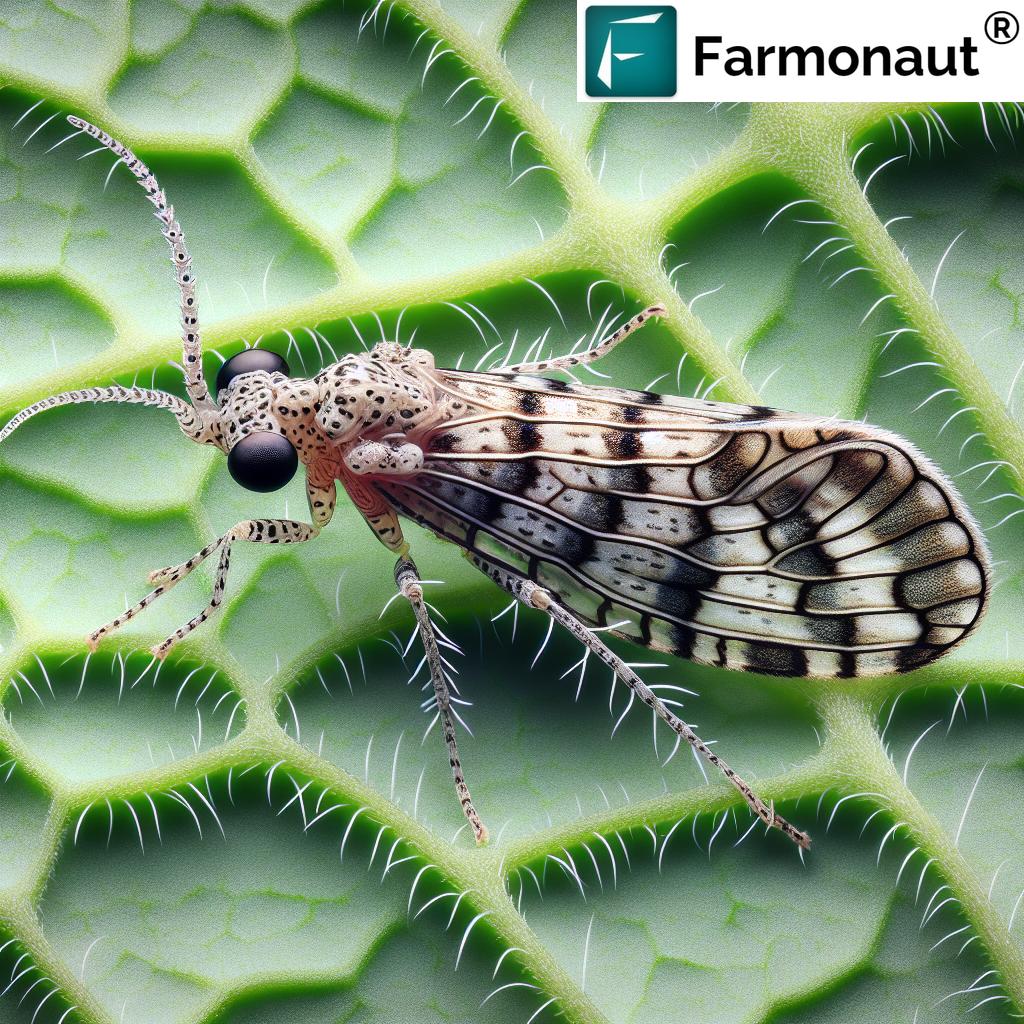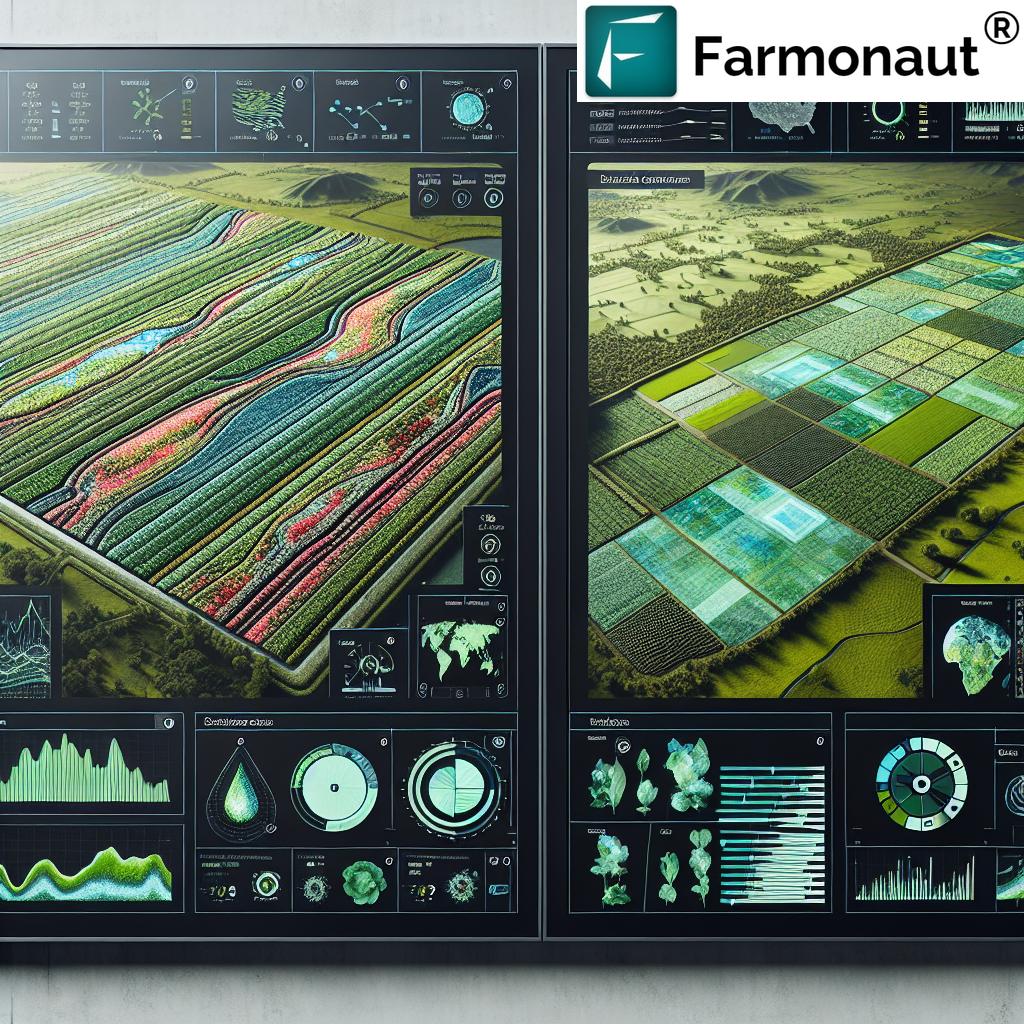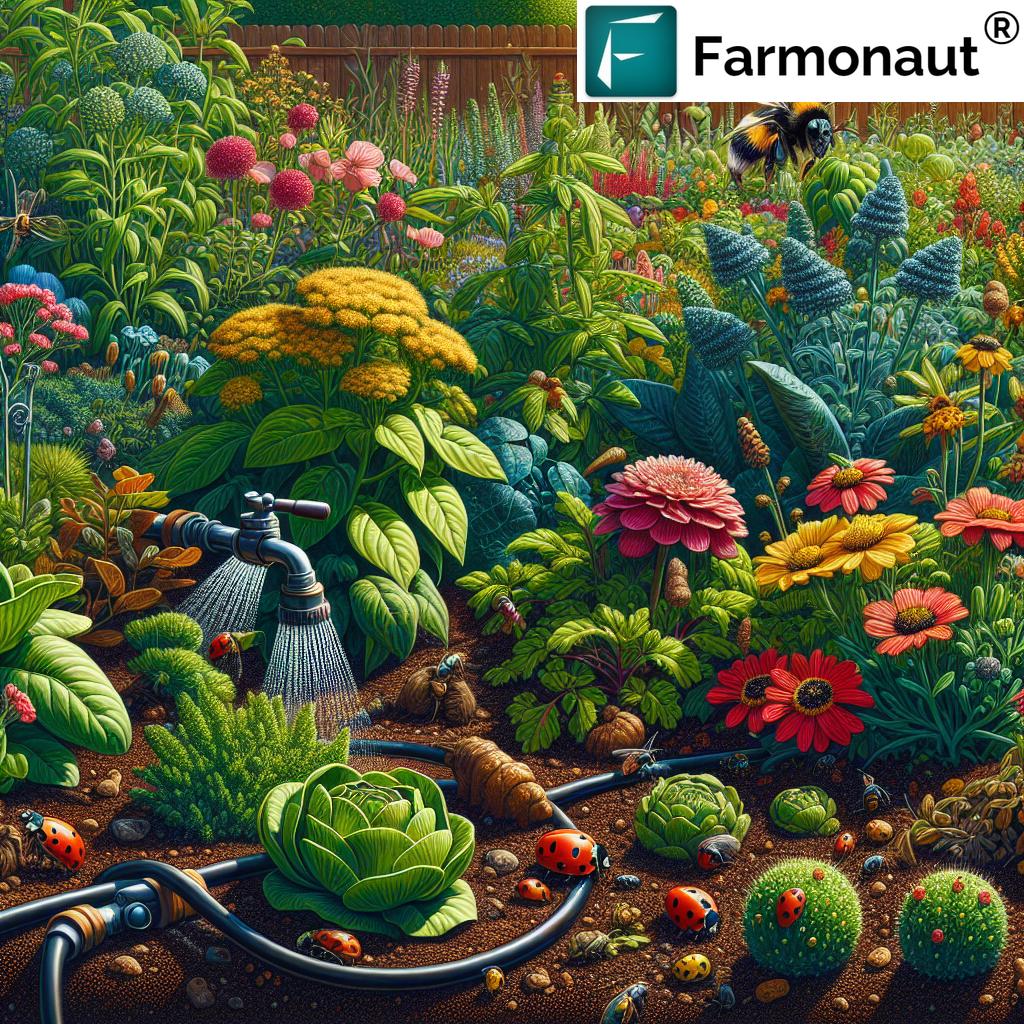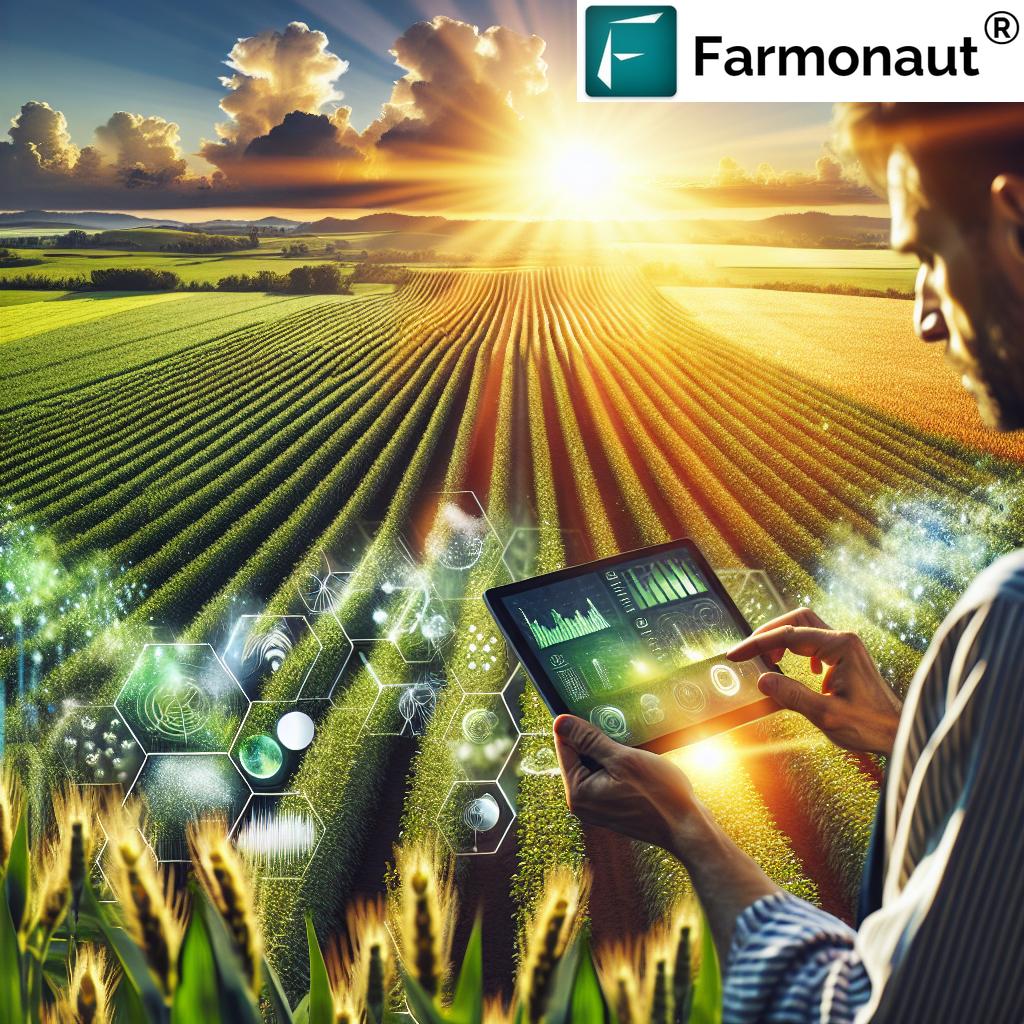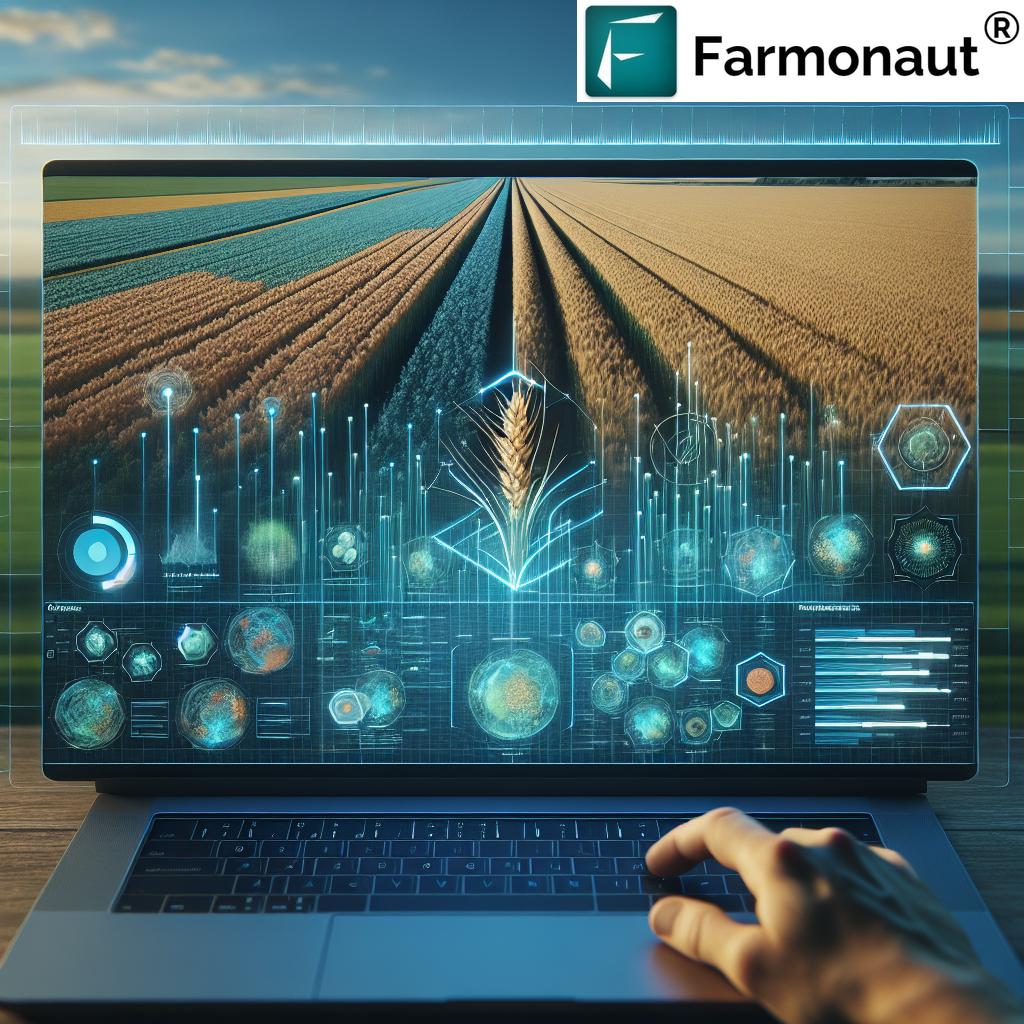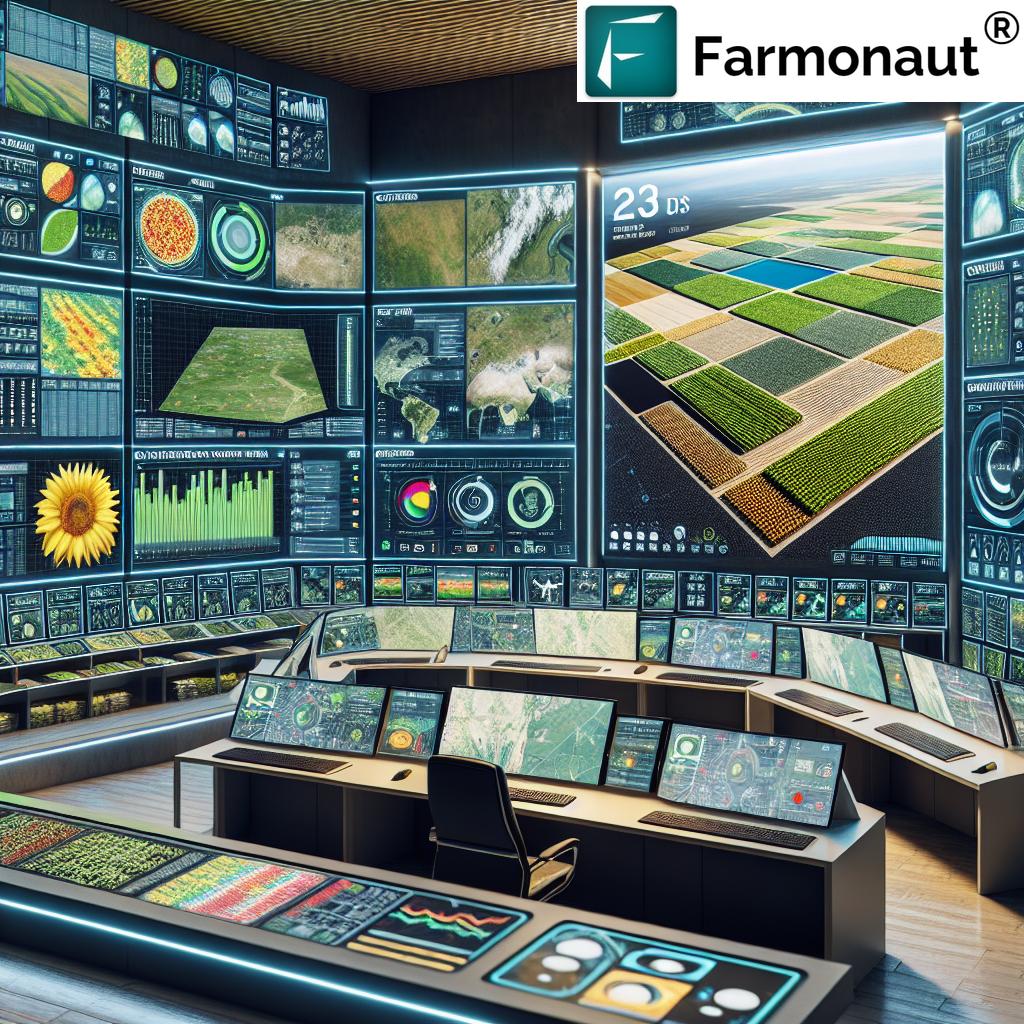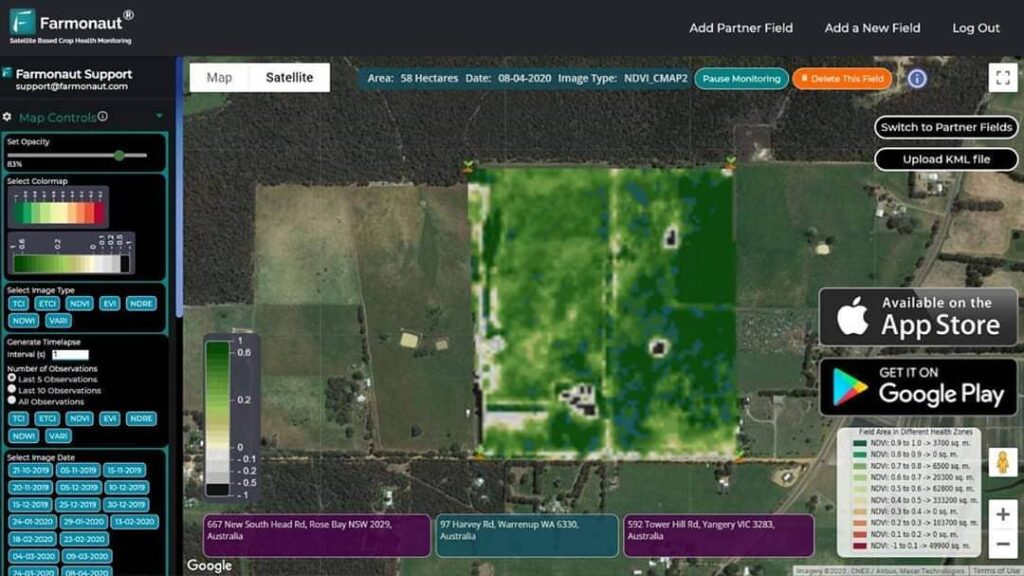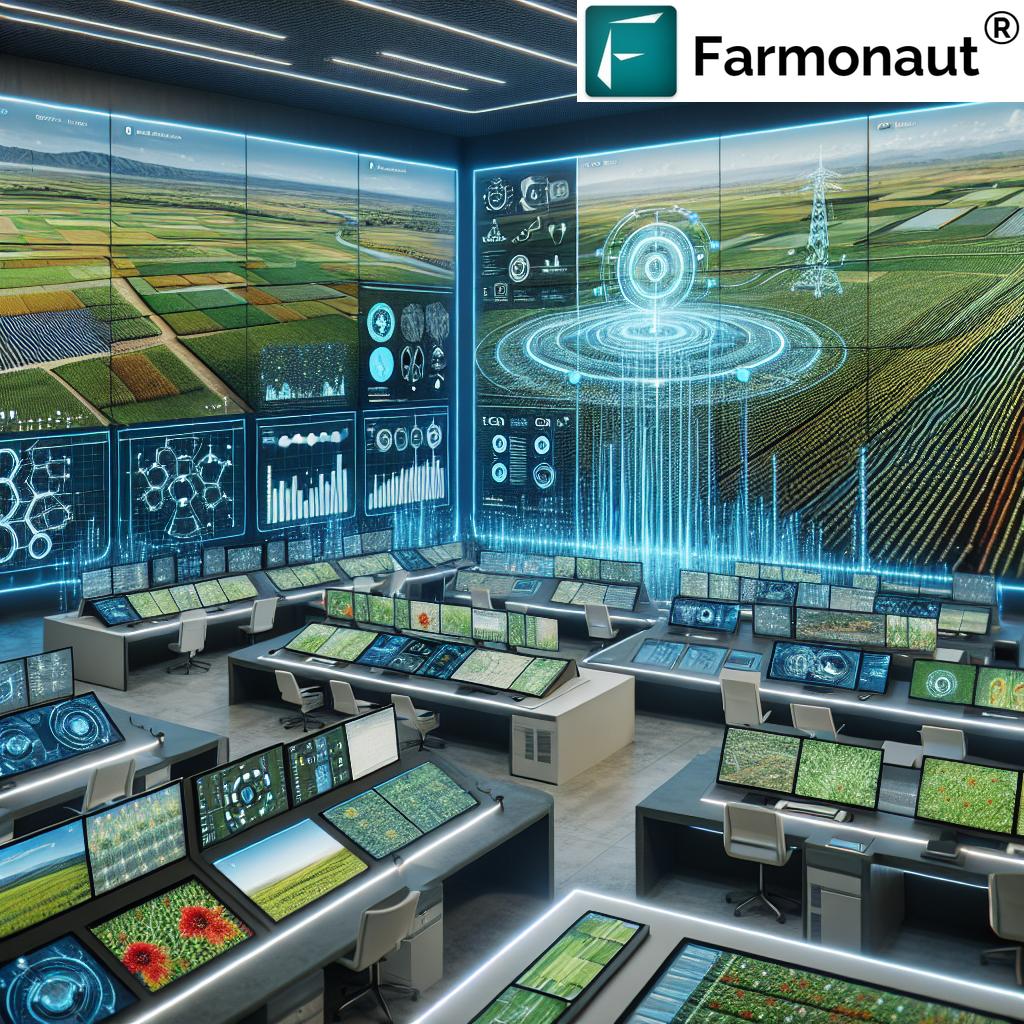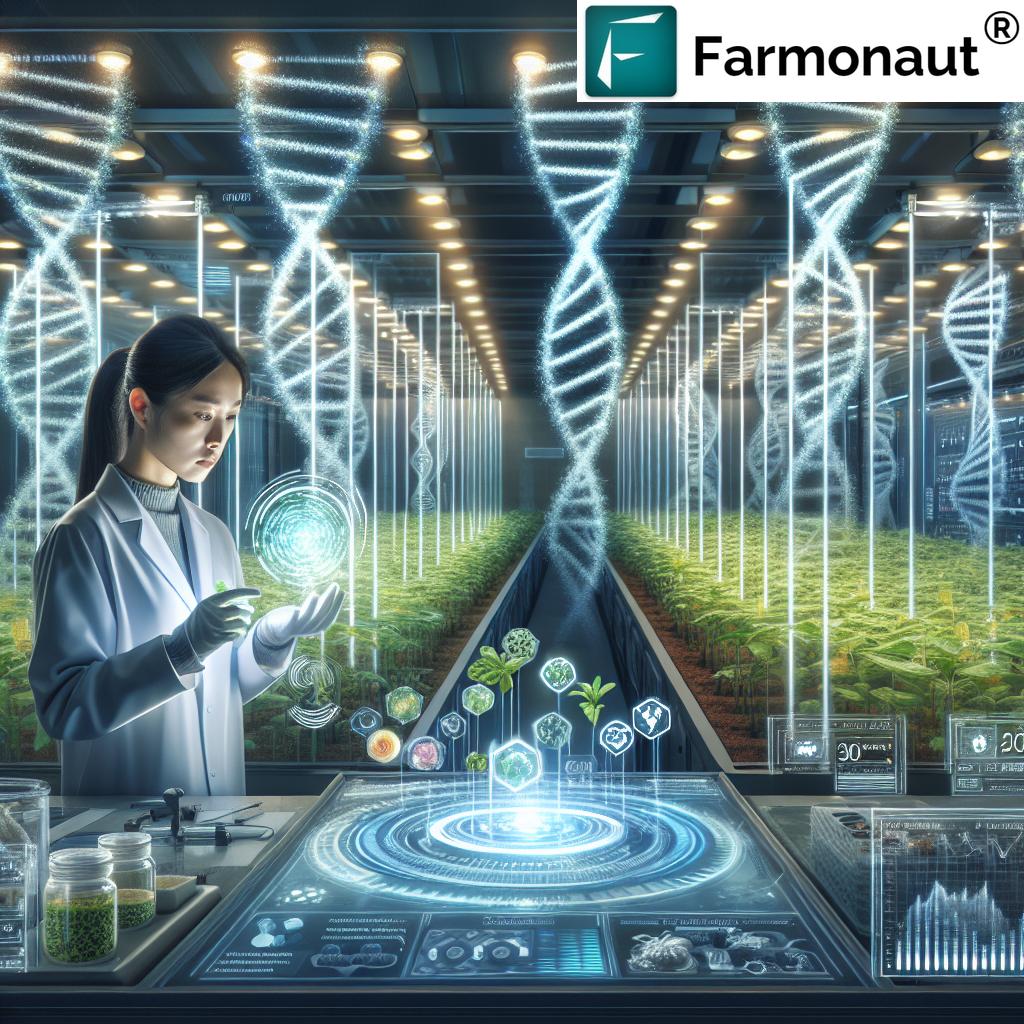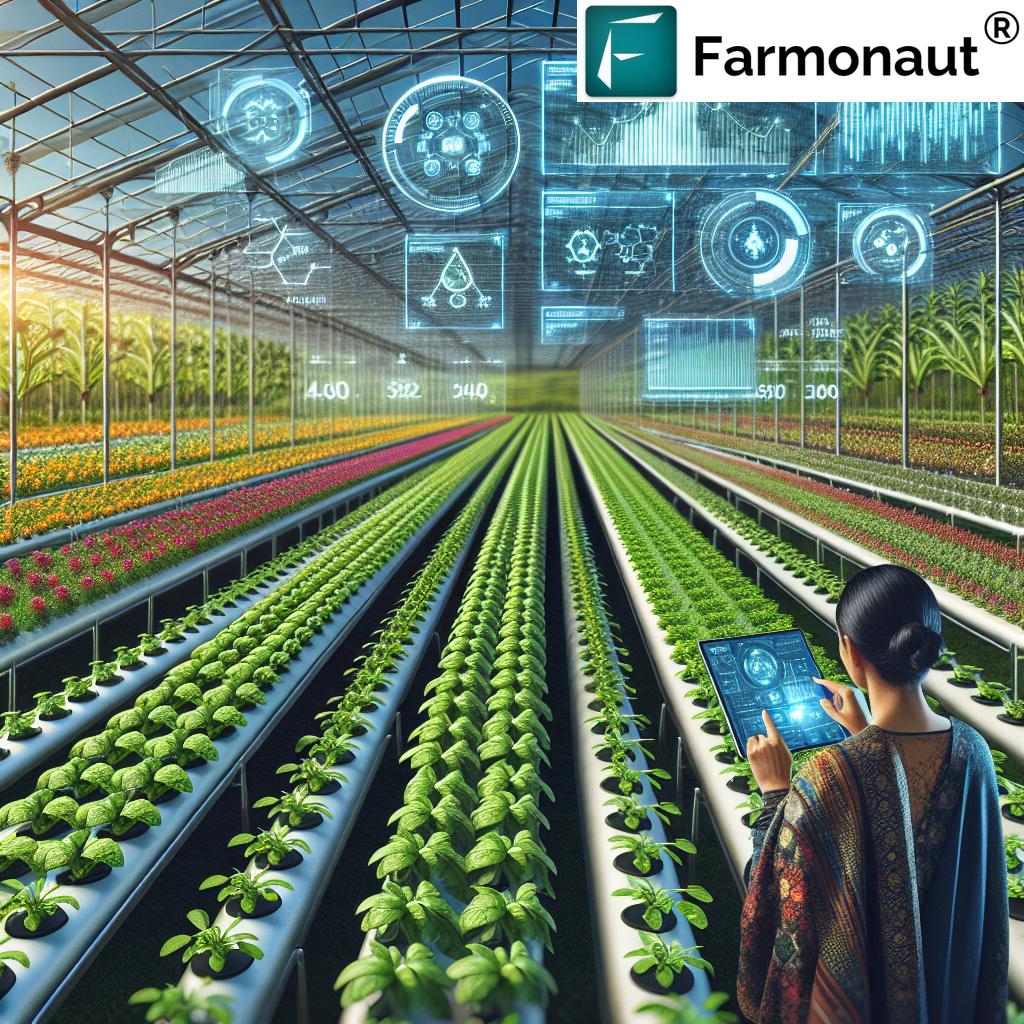Agriculture Data Management: 7 Shocking Productivity Hacks
“Farms using predictive analytics see up to 20% higher crop yields compared to traditional methods.”
Table of Contents
- Introduction: The New Era of Agriculture Data Management
- Why Agriculture Data Management is the Game Changer
- Productivity Hack 1: Comprehensive Data Collection with IoT Sensors
- Productivity Hack 2: Precision Agriculture Technologies & GPS-Based Mapping
- Productivity Hack 3: Harnessing Satellite Imagery and Drone Data
- Productivity Hack 4: Clever Data Processing & Farm Data Integration
- Productivity Hack 5: Predictive Analytics in Farming—Forecasting for Success
- Productivity Hack 6: Automated Application with Smart Farm Machinery
- Productivity Hack 7: Blockchain & AI—Maximizing Transparency and Efficiency
- Comparative Benefits Table: How Each Hack Delivers Results
- Overcoming Challenges in Agriculture Data Management
- Best Practices for Maximizing Data-Driven Farming
- Emerging Technologies: What’s Next for Farm Data Solutions?
- Farmonaut: Making Precision Agriculture Accessible Worldwide
- Farmonaut Subscription & API Access
- Frequently Asked Questions (FAQ)
- Conclusion: The Data-Driven Farming Revolution
Introduction: The New Era of Agriculture Data Management
In today’s rapidly evolving world, agriculture data management stands as a cornerstone of the modern agricultural revolution. As we witness a fusion of advanced technologies, IoT devices, and predictive analytics with traditional farming, we’re propelling productivity, sustainability, and profitability to new heights.
From the lush fields of Punjab to vast corn belts in the United States, farmers and agribusinesses are systematically embracing data-driven farming practices. The goal? To optimize resources, maximize yields, and foster environmentally conscious operations.
But what fuels this transformation? At the heart lies a systematic approach to data collection, storage, integration, analysis, and application. By leveraging data from multiple sources—from satellites soaring above our crops to the tiniest in-field sensors—farmers can make smarter and more informed decisions, ensuring food security and sustainable growth for generations to come.
“Over 60% of modern farms now rely on real-time data management for efficient resource allocation.”
Why Agriculture Data Management is the Game Changer
Agriculture data management isn’t just a buzzword. It’s a transformative process that systematically gathers, processes, and applies information to every aspect of modern agriculture. The direct benefits are numerous:
- Enhanced productivity through immediate identification of field issues
- Improved sustainability via efficient resource management
- Boosted profitability by minimizing losses and maximizing yields
- Compliance and traceability with regulatory standards
Thanks to innovative solutions such as Farmonaut, precision agriculture technologies are becoming more accessible, democratizing data-driven decision making in farmlands across continents.
Productivity Hack 1: Comprehensive Data Collection with IoT Sensors
The foundation of every successful data management system in agriculture lies in robust data collection. Modern agricultural IoT devices and sensors revolutionize this critical step by providing continuous, real-time monitoring of field variables. Let’s explore the diverse ways we can collect comprehensive field data:
Key Data Collection Tools & Technologies
- Soil Moisture Monitoring Sensors: By embedding these sensors across the field, we can track soil moisture levels, nutrient content, and environmental conditions. This data supports timely irrigation and fertilizer adjustments, preventing under- or over-watering.
- Weather Stations & Environmental Sensors: These devices deliver granular insights into temperature, humidity, rainfall, and wind speed, allowing us to anticipate climate-driven risks.
- Smart Equipment and Fleet Data: Integrated sensors in farm machinery gather information about equipment performance, planting density, and operational efficiency.
Our ability to collect and streamline data from these devices enables precise, timely, and informed actions. This practice underpins modern precision agriculture technologies and sets the stage for substantial productivity gains.
Top Use Case
Farmonaut’s platform is an exceptional example of how soil moisture monitoring sensors and satellite imaging deliver accurate, actionable insights to both smallholders and large-scale enterprises, directly contributing to improving farm productivity with data.
Productivity Hack 2: Precision Agriculture Technologies & GPS-Based Mapping
With precision agriculture technologies, we can effectively manage crop field variability. GPS technology and mapping systems allow for precise location tracking, supporting site-specific practices and optimized resource allocation.
-
Global Positioning System (GPS):
GPS technology enables exact location tracking, mapping zones within a field, and identifying specific areas that require extra care. By integrating this data, we can efficiently target treatments and interventions, drastically reducing input waste. - Geospatial Mapping: Maps generated from GPS data reveal field patterns—soil variability, crop health differences, and high/low-yielding sectors.
This level of precision means that modern farmers no longer treat each hectare identically. Instead, we apply water, fertilizer, and pesticides where they are needed most, promoting efficiency, sustainability, and cost savings.
Productivity Hack 3: Harnessing Satellite Imagery and Drone Data
High-resolution satellite imagery for agriculture together with unmanned aerial vehicles (UAVs) and drones offer an unprecedented overview of field conditions. Collecting multi-spectral images, these satellites and aerial vehicles identify:
- Crop health status (NDVI and other vegetation indices)
- Growth patterns and anomalies
- Potential pest infestations and water stress zones
- Changes in soil texture or structure
For instance, Farmonaut uses multispectral satellite images to monitor key crop and soil parameters, arming farmers with information that transforms conventional field scouting into a remote, data-driven approach. This “bird’s-eye view” helps us identify areas that require attention long before problems escalate.
See how Farmonaut’s carbon footprint tracking leverages satellite and AI data to help agribusinesses monitor and reduce their environmental impact—a vital step towards sustainable and responsible agriculture.
Productivity Hack 4: Clever Data Processing & Farm Data Integration
Gathering data is just the beginning—the real power is unleashed during data processing and farm data integration. Here’s how we turn countless data points into meaningful, actionable insights:
Ensuring Data Quality: Cleansing and Integration
- Data Cleansing: This necessary step removes errors, inconsistencies, and irrelevant information from large datasets, boosting the reliability and accuracy of all subsequent analyses.
-
Farm Data Integration: By combining multiple data sources—sensor outputs, satellite images, machinery logs—into a unified platform or dashboard, we can:
- Correlate on-field conditions with remote data
- Identify and visualize trends and patterns
- Enable cross-functional informed decision-making
Advanced Computing for Real-Time Insights
- Edge and Fog Computing: Processing data closer to its source (edge computing) means we get fast, realtime alerts for issues in irrigation, pest outbreaks, or machinery malfunctions—faster than waiting for centralized cloud platforms.
For seamless farm-to-report data flows, check out Farmonaut’s API—it allows for easy integration of satellite and weather data directly into farm management systems. Developers can dive deeper into integration with the API developer docs.
Productivity Hack 5: Predictive Analytics in Farming—Forecasting for Success
What if we could anticipate crop needs, weather risks, or disease threats long before they threaten yield? Predictive analytics in farming harnesses historical and real-time data to forecast future conditions—empowering us to move from reactive to proactive management.
- Historical Data Analysis: By analyzing multi-year data on weather, crop performance, pest outbreaks, and input usage, we can identify recurring patterns and correlations.
-
Predictive Modelling: Machine learning algorithms sift through vast datasets to forecast:
- Yield estimates
- Optimal planting and harvest windows
- Likely pest/disease outbreaks
- Fertilizer and irrigation requirements
Armed with these forecasts, farmers can adjust planting schedules, budgets, and input strategies in advance, slashing losses from unexpected weather or pest attacks.
Did you know? Farms that embrace predictive analytics routinely see yield increases of 10–20%—confirming the essential value of data-driven foresight in agriculture.
Productivity Hack 6: Automated Application with Smart Farm Machinery
Automation is radically changing the face of modern agriculture. With smart farm machinery equipped with integrated sensors, the tedious task of uniformly spreading seeds, water, or nutrients is replaced by automated, variable-rate application.
- Seeders and Planters: By using data from soil sensors and topographic maps, these machines deliver seeds at optimized densities—maximizing germination and yield.
- Automated Sprayers & Spreaders: Leveraging GPS and real-time sensing, these tools minimize overlap and waste, and only apply inputs where truly needed.
- Harvesters and Yield Mapping: Harvesting machines collect data on yields as they move through the field, instantly showing which zones are most or least productive.
Farmonaut’s dashboard enables real-time fleet management, supporting agribusinesses in optimizing vehicle usage and cutting down on operational inefficiencies—further enhancing productivity and profitability.
Productivity Hack 7: Blockchain & AI—Maximizing Transparency and Efficiency
The final—and perhaps most radical—hack involves bringing artificial intelligence (AI) and blockchain into our agriculture data management strategy.
- AI for Big Data Analysis: AI systems analyze complex datasets from multiple sources (satellite, in-field sensors, weather feeds) to uncover connections and provide actionable, real-time insights. For example, Farmonaut’s Jeevn AI system delivers personalized advisory by analyzing satellite data and environmental conditions.
- Blockchain-Based Traceability: Every stage of a crop’s journey—from planting to sale—is securely recorded, ensuring authenticity and transparency for consumers and supply chain partners.
Explore how Farmonaut’s blockchain-based traceability solutions support transparent supply chains and build trust across the agriculture ecosystem.
Comparative Benefits Table: How Each Hack Delivers Results
| Productivity Hack | Description | Key Technology Used | Estimated Productivity Increase (%) | Sustainability Impact |
|---|---|---|---|---|
| Comprehensive Data Collection with IoT Sensors | Real-time in-field monitoring of soil moisture, nutrients & climate conditions | IoT Devices, Field Sensors | 10–15% | Reduces water & fertilizer waste |
| Precision Agriculture & GPS Mapping | Location tracking for targeted input applications | GPS, Precision Ag Tools | 15–20% | Cuts input usage, slows soil degradation |
| Satellite Imagery & Drones | Remote health, stress, pest & growth pattern monitoring | Satellites, UAVs, Imaging Software | 8–12% | Early issue detection reduces losses |
| Clever Data Processing & Integration | Unified system for comprehensive data analysis | Edge/Fog Computing, Unified Platforms | 10–15% | Enhances resource allocation |
| Predictive Analytics in Farming | Data-driven planning & real-time forecasting | Machine Learning, Data Analytics | 10–20% | Optimizes inputs, reduces environmental risk |
| Automated Application with Smart Machinery | On-the-fly adjustments for planting, spraying & harvesting | Smart Machinery, Telematics | 12–18% | Less input waste, higher efficiency |
| Blockchain & AI Transparency | Supply chain traceability, AI advisory & process automation | Blockchain, AI, APIs | 5–8% | Enables sustainable sourcing & trust |
Overcoming Challenges in Agriculture Data Management
While the benefits are clear, agriculture data management does come with its share of challenges:
- Data Integration & Standardization: One of the major obstacles is combining data from diverse sources with differing formats and standards. To fully leverage value, we must prioritise standardized protocols and unified system architectures.
- Data Privacy & Security: With increasing cloud-based systems comes concern for securing sensitive information. Implementing strong encryption, access controls, and regular audits is essential.
- Technical Expertise & Training: Advanced analysis and IoT system deployment require specialized skillsets. Ongoing education, partnering with technology providers, and government/NGO support can help bridge this gap.
Farmonaut addresses these complex challenges in agriculture data management with user-friendly apps (Web, Android, iOS) and documentation, so users can quickly adopt sophisticated technologies without steep learning curves.
Best Practices for Maximizing Data-Driven Farming
Here are best practices to optimize agriculture data management for maximum benefit:
- Adopt Standardized Data Formats: Ensures smooth farm data integration, interoperability, and platform flexibility.
- Prioritize Data Quality: Regular cleansing to ensure accuracy and avoid misleading results.
- Uphold Security & Privacy: Use strong passwords, user permissions, encryption, and regular system monitoring.
- Foster Continuous Learning: Stay updated with emerging technologies and data management methodologies for ongoing improvements.
- Enable Seamless Integration: Use platforms that allow combining data from sensors, satellites, smart machinery, and cloud sources.
Emerging Technologies: What’s Next for Farm Data Solutions?
The agritech world is accelerating faster than ever. Here’s what’s on the horizon for agriculture data management:
- Artificial Intelligence (AI) Expansion: Sophisticated AI algorithms will dig deeper into behaviour, soil carbon, and yield prediction, offering near-instant feedback for vital decisions.
- Robotics: Next-gen autonomous machines will handle planting, weeding, harvesting, and in-field data collection, further streamlining operations and lowering costs.
- Full-Stack IoT: The emerging Internet of Things infrastructure will enable seamless connections among a wider variety of sensors, equipment, and cloud databases.
- Advanced Machine Learning for Big Data Analysis: As datasets expand, machine learning will continue to unearth hidden patterns, delivering predictive insights once thought impossible.
Farmonaut remains at the forefront, leveraging all these tools to democratize precision agriculture and data-driven insights worldwide.
Farmonaut: Making Precision Agriculture Accessible Worldwide
Farmonaut is committed to integrating state-of-the-art technology with traditional farming practices around the globe. A pioneer in affordable, satellite-based farm management solutions, Farmonaut’s core services include:
- Real-time Crop Health Monitoring: Multispectral satellite images for vegetation and soil analysis
- Jeevn AI Advisory System: Instant, personalized crop management recommendations
- Blockchain-Based Traceability: Transparent supply chains — vital for food, textile, and agri export industries
- Fleet & Resource Management: For optimizing the logistics of planting, harvesting, and input delivery
- Carbon Footprinting: Environmental tracking to drive sustainable agriculture
Who Benefits from Farmonaut?
- Individual Farmers: Affordable, data-driven decision-making tools—delivered to mobile apps
- Agribusinesses: Large-scale plantation management and organizational dashboards
- Governments & NGOs: For remote crop assessment, yield estimation, and distribution planning
- Financial Institutions: Satellite-based farm verification for crop loan & insurance
- Corporate Clients: Reliable traceability solutions for transparent supply chains
Access Farmonaut from Anywhere
Farmonaut Subscription & API Access
Farmonaut operates on a flexible, subscription-based pricing model—tailored to farmers, cooperatives, agribusinesses, and governments. Whether you’re managing a family farm or a multinational plantation, you can select the features and data frequency you need.
Want to extend Farmonaut’s real-time insights to your own apps or management systems? Integrate with the Farmonaut API—explore technical details with our API documentation.
Frequently Asked Questions (FAQ)
-
What is agriculture data management?
Agriculture data management refers to the systematic collection, integration, processing, analysis, and application of agricultural data to optimize farm operations, improve productivity, sustainability, and facilitate informed decision-making. -
How can IoT devices benefit farming?
Agricultural IoT devices collect real-time data on soil, weather, crop growth, and machinery. This enables precise resource allocation, quick detection of stress, and improved yield outcomes. -
Why is predictive analytics important in farming?
Predictive analytics uses past and present data to forecast crop yields, pest outbreaks, and optimal planting windows. It empowers farmers to proactively plan and implement effective interventions. -
How are privacy and security ensured in agriculture data management?
Data privacy and security are maintained through robust encryption, strict access controls, regular system audits, and compliance with international data protection standards. -
What makes Farmonaut unique in the agritech space?
Farmonaut offers affordable, satellite-based farm management (web/mobile/API), integrates advanced AI and blockchain, and provides real-time, actionable insights for individual farmers, agribusinesses, and government institutions. -
Is it difficult to integrate Farmonaut’s technology into existing farm operations?
No, Farmonaut’s intuitive platform and thorough documentation make it easy for users to adopt advanced farm data solutions, regardless of their technical background. -
How does Farmonaut promote sustainable agriculture?
By optimizing input use, providing carbon footprint tracking, and enabling supply chain traceability, Farmonaut helps reduce waste, conserve resources, and support environmentally responsible agriculture.
Conclusion: The Data-Driven Farming Revolution
We are entering a bold new era—in which agriculture data management is the key to sustainable prosperity for farmers, agribusinesses, and society at large. By embracing comprehensive data collection, integrating sensors and satellite imagery, applying predictive analytics, and adopting AI and blockchain, we can achieve unforeseen leaps in field productivity and environmental stewardship.
Platforms like Farmonaut lower the technology barrier, ensuring precision agriculture, transparent supply chains, and efficient resource allocation are within every farmer’s reach. The path to future-ready farming is clear: leverage technology, trust the data, and harvest sustainable success.


